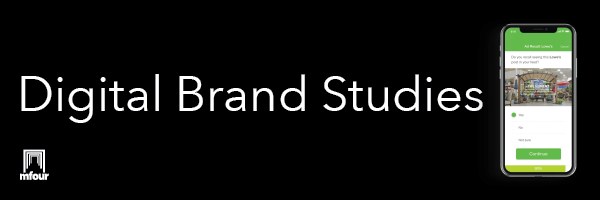
Trying to measure advertising ROI occupies the workdays (and perhaps some sleepless nights) of Chief Marketing Officers, brand managers and consumer insights specialists the world over. The problem is that advertising ROI as it’s commonly measured might as well stand for Really Only Inferences. In the absence of real data from real consumers, measurement quickly becomes supposition.
Things were so much better 4,000 years ago. That’s when the first marketers began branding products and measuring the impact on sales. And they had the benefit of using real data from real consumers to measure the return on their branding efforts.
According to scholarship published in the Journal of Macromarketing, if a friend invited you over to dinner during the Shang Dynasty in China (2000-1500 BC), chances are you’d be served from pottery marked with symbols unique to its maker, who was also its marketer. And if you admired your host’s serving bowls, the symbol on them would surely catch your eye and prompt you to ask who made them. And that would be the first step toward product awareness, intent to purchase, and, eventually, to a sale. The maker’s investment of time and effort in festooning bowls with branding symbols would have earned a nice return.
That ancient Chinese potter had a huge advantage over many 21st Century marketing, advertising and consumer insights professionals when it came to understanding ROI. The potter could engage each actual buyer in person, and understand exactly what motivated each purchase.
Now the direct connection to feedback from actual consumers largely has vanished. In attempting to measure ROI for Out of Home advertising, for example, today’s marketing and insights professionals are forced to fall back on inferences from data that may be tangential or even irrelevant to the actual purchase.
For example, one common but flawed method for measuring ROI is to make estimates based on raw traffic counts. The assumption is that people who passed by a highway billboard or another form of OOH advertising were in fact aware of the sign, the brand and the product. And that the sign played a significant part in driving them to shop and buy. That’s a lot to assume.
Another method, more grounded in today’s technology, uses mobile geolocation to determine that a particular consumer’s smartphone (and therefore its owner) passed in view of a sign, and subsequently was geolocated at a store carrying the advertised product. Third-party data such as apps detected on that consumer’s smartphone also might enter the mix as another input for spitting out inferred ROI metrics. Still, what’s missing from that algorithmic equation is the reality obtainable only from known and validated consumers.
Here’s what’s often assumed or inferred in today’s standard methods for estimating advertising ROI:
- That an OOH ad helped cause a store visit, rather than merely correlating with it.
- That knowing which apps a consumer has downloaded is sufficient for making accurate inferences about who that consumer is. For example, whether he or she is a he or a she, and belongs to a consumer segment the OOH campaign is meant to target.
- That an upswing in sales of the advertised product during or just after the campaign is by itself a trustworthy indicator that the campaign was a key driver of the added revenue.
- For example, a sunblock brand may fly off the shelves during an OOH campaign, but the real driver could be a heatwave, rather than the advertising.
So what should marketers and researchers do to recapture the advantages Chinese artisans of 2000 BC enjoyed when it came to getting real marketing and advertising ROI metrics from real people?
The answer begins with identifying and surveying real consumers who’ve had validated exposure to an OOH campaign. As for the rest, it will cost you a click to find out – so just click here.




